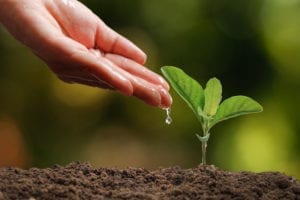A colleague of mine told me that the Ojibwe, a Native American tribe, have a philosophy about the order of things. They believe that plants are at the top of the order because, without them, the sun’s energy can’t be photosynthesized into life-giving nutrients. Next in the order are animals, who create more biodiversity and spread nutrients through the ecosystem. Finally, humans are third.
This is so different from how our world currently works. Our behaviors reveal that humans’ needs are placed at the top, with animals, plants and the earth at the bottom. As a result, we have made and continue to make decisions that weaken the resilience of our planet.
Over time, this attitude has created a system that is becoming less vital and resilient. We extract nutrients because we think it is our right to do so (since we are at the top of the order of things). We exploit resources because our business models tell us that is how it is done. And we do these things to serve our short-term self-interest or organizational interest.
Outcomes of a changed order
What if we put the earth, plants, animals and the needs of future generations ahead of human wants? Imagine the kinds of innovation possible if we needed technologies that would protect the earth first while also serving human needs. Consider how our relationships with each other would change if we started with a reciprocity and respect between us and nature. Perhaps we would stop using power over others as a strategy. Maybe we would stop extracting talent to serve corporate and private profit.
Our attitudes of extraction without consideration for long-term consequences create a degenerating system. When we take nutrients without a sense of balance, enough-ness and future generations’ needs, we diminish the future in service of the present. That is the consequence of believing it is ok to exploit resources – human or natural – if we see them below us on the hierarchy.
I invite you into an experiment.
Take the next week and use the Ojibwe order of things to view the world. Look around you and see how your actions and those of your organization, family or community prioritize plants. What structures help or hinder plants to thrive and produce their life-giving nutrients from sunlight? Observe how your organization designs things to help plants and animals first before the needs of human beings. What does your organization do that prioritizes people over plants and animals? What is the assumption behind these actions?
If you take a week to just notice, I suspect you will see how human-centric our decision-making is. This mindful practice might help us realize that we are gradually diminishing what is critical to our own lives. That is the message of the Ojibwa order of things. They acknowledge that we can’t survive into the future without the diverse abundance of plants and animals to support life on this earth.






